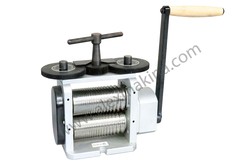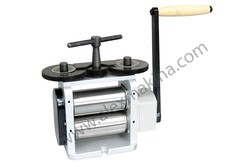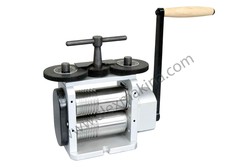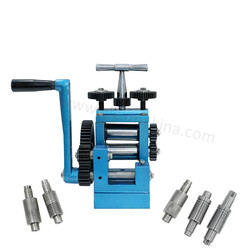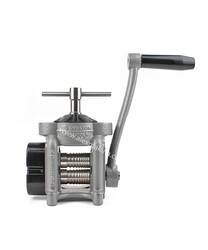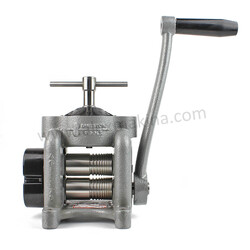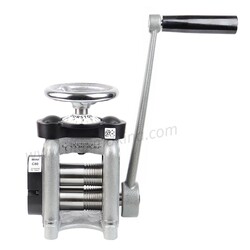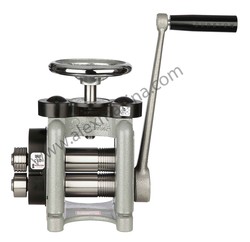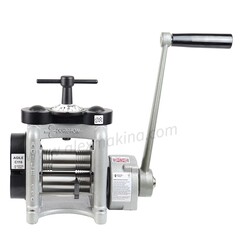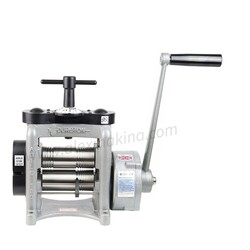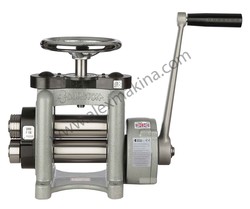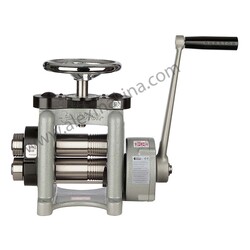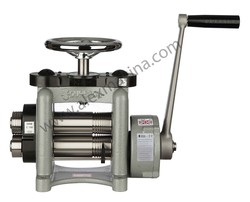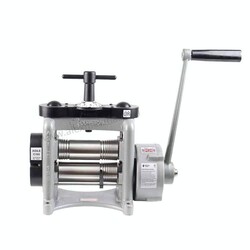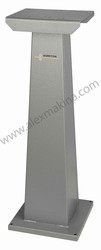Manual Rolling Mill Machine and Tools
What is a manual rolling mill?
A manual rolling mill is a machine for the pressure shaping of metal and other materials between rotating rolls. In a wider sense, a rolling mill is a system or line of machines that perform rolling and supporting tasks:
- Allocation of the rolled material from one groove to another, turning.
- Conveyance of the metal after rolling.
- They are cutting into sections.
- Stamping and marking.
- Decoration and packing.
- Conveyance to the stock of completed product.
The manual rolling mills are perfect for easily and regularly reducing metal thickness to get the exact shape. So jeweler requires the selection of jewelry-making and metal-forming work you do. We are the best manual rolling mills provider; everyone can be purchased what they want and looking for.
How to use a manual rolling mill machine?
Manual rolling millsare one of the more common goldsmith tools found in small and medium-sized workshops. Generally, the rolling mill machine is a simple one that imparts numerous attributes with a crush. Commonly jewelry rolling mill will have steel rollers; this implies that it becomes beaten when metal is passed between them, changing the instrument or even shape of the jewelry piece—for instance, changing a circle into an oval shape.
- 1.If you are making jewelry with sterling silver, copper, or other metals, you'll quickly discover that a rolling mill is a great way to texture metals.
- 2.The primary use of rolling mills is to roll a metal sheet into a thinner sheet. It will also work-harden it.
- 3.The main explanation we utilized for our workplace rolling mill was to run metal sheets through it. It was enjoyable to engrave designs onto the toughened copper sheet.
- 4.It will be a money-saver when jewelers melt scrap into ingots and roll them through the rolling mill. You can make your own metal sheet or wire from scraps.
- 5.Manual rolling mills do work quickly. It can help make shriller, crispier edges on your folds forming.
- 6.Our efficient manual rolling mill is used to turn metal sheets or scrap into thinner pieces, turning a piece of gold into a thin foil for making jewelry.
- 7.You can print textures onto metal using a rolling mill, also called roller printing. It can damage your mill and if you don't use it safely.
Hand Rolling Mills
A hand rolling mill is a machine designed to produce thinner gauges of sheet metal and wire. It is used in the jewelry business. Most jewelers use a hand-rolling mill in their everyday work.
The hand rolling mill contains two flat, highly polished, hardened steel rolls mounted in the equivalent. All powder covered for superior weathering protection and appearance.
Manual roller mill
Manual roller mills use cylindrical rollers, also in opposing pairs or against flat plates. They are used for crushing or grinding different materials, such as metal, ore, gravel, plastic, and other stones. Roller grain mills are an alternative to traditional millstone measures in gristmills.
Find much efficient manual Rolling Mill and manual patterns. Get the best deals from our online shop
Manual benchtop rolling mill
With hardened rollers and precision-machined gears, the manual benchtop rolling mill stands up to heavy use. They are frequently utilized to;
- Wrapping sheets to special gauge size
- Convert scrap metal into sheets or wire
- create different thicknesses in a single piece of metal without welding multiple pieces together.
After some passes through the mill, you may need to harden your metal to soften it and prevent cracking.
Manual rolling mills are gear driven, making them easier to turn than direct-drive rolling mills. Their rollers have grooves so you can form a square and half-round wire in adding to sheets. Electric rolling mills do not need hand cranking. So they offer the power you need to complete high volumes of work. These rolling millshave flat rollers for creating uniform sheets. The gear speed ratio indicates the force it takes to turn the output gear. For instance, the manual rolling mill has a 6:1 gear ratio. It means you rotate the handle six times to turn the gear powering the rollers once.
